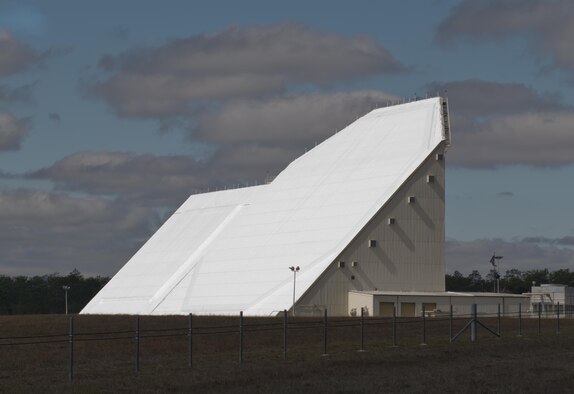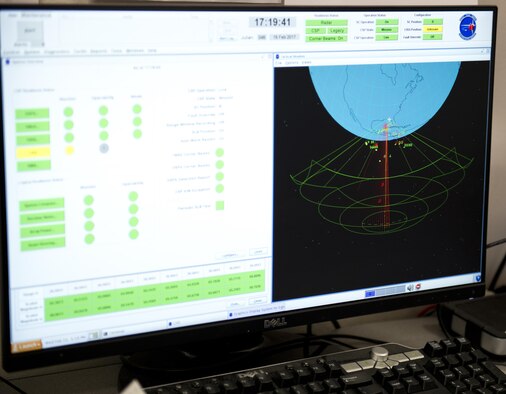6.03.2017
Space squadron supports record-breaking satellites launch
By Kristin Stewart, Team Eglin Public Affairs / Published February 27, 2017

The 20th Space Control Squadron's Charlie Crew successfully tracked India's Polar Satellite Launch Vehicle Feb. 15 at Eglin Air Force Base, Fla. Loaded with 104 satellites, the Indian PSLV set the record for the most spacecraft launched by a single rocket. The squadron’s Airmen track an estimated 23,000 near-Earth and deep-space objects. (U.S. Air Force photo/Kristin Stewart)

Using the world's most powerful phased array radar, 20th Space Control Squadron Airmen track an estimated 23,000 near-Earth and deep-space objects at Eglin Air Force Base, Fla. As objects orbit the earth, the AN/FPS-85 radar sweeps for debris within its field of view. If objects are not identified and tracked, they can be a risk for other satellites as well as the crew aboard the International Space Station. (U.S. Air Force photo/Kristin Stewart)
"This launch is important because we want to ensure our national assets aren't impacted," said Lt. Col. Raj Agrawal, 20th SPCS commander. "Part of our role in space superiority is we have to ensure we're always ready to respond, whether the risk is accidental or intentional."
Using the world's most powerful phased-array radar, the space surveillance squadron uses an integrated team of military and civilian Airmen to track an estimated 23,000 near-Earth and deep-space objects each day. The AN/FPS-85 is the only phased array radar capable of tracking objects 40,000 kilometers away.
As objects orbit the earth, the AN/FPS-85 radar sweeps for debris within its field of view. If objects are not identified and tracked, they can be a risk for other satellites as well as the crew aboard the International Space Station.
"This launch presented a unique challenge for us to track since it was the highest amount of payloads released by a single launch vehicle," said Capt. Isaiah Montemayor, flight commander of weapons, tactics and training. "It lacked predictability due to the high number of small satellites, which made them difficult to detect."
Due to the magnitude of the Indian PSLV launch, three weeks of planning and testing were required before operational execution. The space surveillance team prepared for several possible outcomes, including collisions, which have the potential of creating thousands of pieces of hazardous debris.
"All that mission planning goes into making sure we maximize radar effectiveness," said 2nd Lt. Lauren Bauer, 20th SPCS crew commander.
Objects orbiting the Earth travel at 17,150 mph, which gives the radar a limited window of opportunity to detect objects within its field of view. Objects launched from Indian PSLV were initially detected by the phased array radar for less than 10 minutes.
Due to the earth's rotation and the natural motion of objects from the Indian PSLV launch, individual objects were visible for less than 10 seconds during their second orbit. The objects weren’t visible again for another nine hours to the Eglin radar.
Additional Air Force surveillance units from across the globe continuously tracked the objects from the Indian PSLV launch as they passed through their own radar's field of view.
Crews at the 20th SPCS work 24/7 tracking known and unknown objects orbiting the earth. Data is then transmitted to the 18th Space Control Squadron in Vandenberg AFB, Calif., to be logged for regular monitoring.
The 20th SPCS surveillance mission is increasingly vital as space becomes more contested, degraded, and operationally limited. This threatens the safety of the ISS and U.S. satellites. Michael McKinnon, 20th SPCS chief of maintenance, spent the last three decades at Eglin’s radar site watching the space mission evolve.
"The importance of tracking debris is to protect space flight, which has become more important," said McKinnon. "We started with a catalog of 6,000 objects and now actively track 23,000 objects."
In addition to Eglin’s radar site, there are three space surveillance detachments within the 20th SPCS located in New Mexico, the British Indian Ocean, and Hawaii that also detect near and deep-space objects using telescopes.
The 20th SPCS continues to track and provide vital information on objects released from the Indian PSLV launch until all 104 satellites are successfully characterized to support national security interests.
Quelle: USAF
